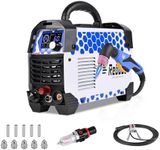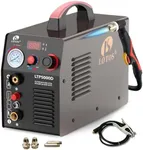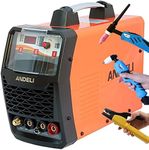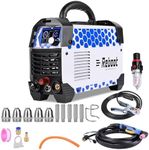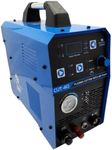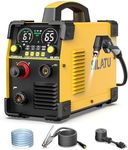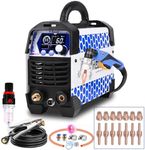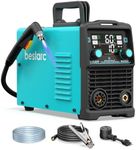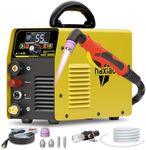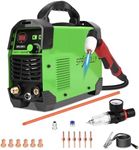Buying Guide for the Best Plasma Cutters
Choosing the right plasma cutter can be a daunting task, especially if you're new to the world of metalworking. Plasma cutters are essential tools for cutting through electrically conductive materials like steel, aluminum, and copper. To make an informed decision, it's important to understand the key specifications and how they align with your specific needs. Here’s a guide to help you navigate through the essential specs and pick the best plasma cutter for you.Cutting ThicknessCutting thickness refers to the maximum thickness of material that the plasma cutter can effectively cut through. This is important because it determines the range of materials you can work with. Plasma cutters are generally categorized into light-duty (up to 1/4 inch), medium-duty (up to 1/2 inch), and heavy-duty (over 1/2 inch). If you primarily work with thin materials, a light-duty cutter will suffice. For more versatility, a medium-duty cutter is a good choice. Heavy-duty cutters are best for industrial applications where thick materials are common.
Amperage OutputAmperage output indicates the power level of the plasma cutter. Higher amperage allows for cutting thicker materials and faster cutting speeds. Plasma cutters typically range from 20 to 100 amps. For light-duty tasks, 20-40 amps are usually sufficient. Medium-duty tasks may require 40-60 amps, while heavy-duty tasks often need 60-100 amps. Choose an amperage that matches the thickness of the materials you plan to cut most frequently.
Duty CycleThe duty cycle is the amount of time a plasma cutter can operate continuously before needing to cool down. It is usually expressed as a percentage over a 10-minute period. For example, a 60% duty cycle means the cutter can run for 6 minutes and needs 4 minutes to cool down. A higher duty cycle is important for extended cutting sessions and professional use. For occasional or hobbyist use, a lower duty cycle may be sufficient.
PortabilityPortability refers to the ease with which you can move the plasma cutter around. This is determined by the weight and design of the cutter. Lightweight and compact models are ideal for on-site jobs and frequent transportation. Heavier models are generally more powerful but less portable. Consider how often you will need to move the cutter and choose accordingly.
Input VoltageInput voltage is the electrical power required to operate the plasma cutter. Common options are 110V, 220V, or dual voltage. 110V models are suitable for home use and light-duty tasks, while 220V models are better for industrial applications and thicker materials. Dual voltage models offer flexibility, allowing you to switch between voltages as needed. Choose based on the power supply available in your workspace and the materials you plan to cut.
Pilot ArcA pilot arc is a feature that allows the plasma cutter to start cutting without directly touching the material. This is useful for cutting through painted, rusty, or expanded metal surfaces. It also extends the life of the consumables. If you frequently work with such materials, a plasma cutter with a pilot arc feature is highly recommended.
ConsumablesConsumables are the replaceable parts of the plasma cutter, such as electrodes and nozzles. The lifespan and cost of consumables can affect the overall operating cost of the cutter. Look for models with readily available and affordable consumables. If you plan to use the cutter frequently, consider the long-term cost of consumables in your decision.
